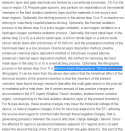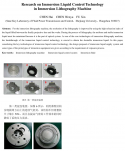: ) 15 2050 system would be nice. But that 1.2B purchase is spread out across all front end litho systems to support all SMIC’s fab expansions. And if we study SMIC’s public financial reports we’ll see most of their expansion and growth is not in advanced technology nodes.As mentioned by @foofy from his previous past post (thanks for confirming) how many? If NXT 2050i cost $80 million, then a maximum of 15 units may had been bought by SMIC. As a way of achieving its 2 prong strategy by developing 7nm and 5nm core competency using foreign machine while indigenizing 28nm and 14nm production line.
Mar 3, 2021 — Chinese chipmaker Semiconductor Manufacturing International Corporation (SMIC), announced on Wednesday a deal for $1.2 billion worth of ...
More likely at least ore or two systems to support R&D and limited pilot production. SMIC is in the business of making a profit. I would certainly hope they would invest wisely and watch their operational expenses. Splurging in the latest tech to manufacture 28nm is not very wise from profitability stand point. But then again, maybe they are panic buying…buying as much advanced tech while they still can before US cut them off.
My sources confirmed two system, but they don’t know if more 2050 are on their way to SMIC or not.


